Don’t Just Stuff the Turkey!
By · Comments– stuff your child with gratitude.
 Thanksgiving is just days away and in addition to stuffing the turkey, have you considered stuffing your child with a sense of gratitude as well? This is definitely the season to give thanks and be grateful but doing so should be our focus year round.
Thanksgiving is just days away and in addition to stuffing the turkey, have you considered stuffing your child with a sense of gratitude as well? This is definitely the season to give thanks and be grateful but doing so should be our focus year round.
The holiday season is now in full swing and the hustle and bustle that goes with it is here to stay for the next month. During this time of year, I’ve witnessed people in a quest for that popular item that everyone seems to need – and they are willing to get up in the wee hours of morning to stand in line for it. This, “I want”, “I need”, “I must have attitude” is very prevalent.
Is this that the attitude you want your child to develop? Greedy little whiners are easy to cultivate in our commercialized and media saturated culture. We live in an extremely materialistic world and children are naturally born to be egocentric. These two ingredients set the stage for creating materialistic adults unless you mindfully nurture a different outcome – and you have the power to alter this trajectory.
Is developing an attitude of gratitude more to your liking? If so, allow me to add some strategies and ideas to what you are already doing. Acquiring an attitude of gratitude does take time, patience and consistency but it will definitely help your child live a more contented life. If this is your mission, here’s an article with some ideas to help you achieve this goal – Growing Gratitude in Children With or Without Autism
Seven Simple Life Rules for Kids with ASD
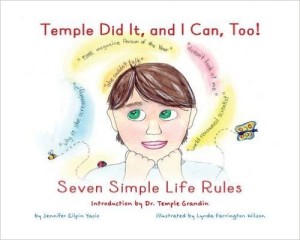 Every child has obstacles to overcome, some more than others, but they can be tackled. Children with an Autism Spectrum Disorder (ASD) are no different, they can learn how to cope with, compensate for and manage their challenges as well. This inspiring story based on the life of Dr. Temple Grandin, as told by author, Jennifer Gilpin-Yacio, presents a hopeful message that can instill a positive outlook and can-do attitude in any reader.
Every child has obstacles to overcome, some more than others, but they can be tackled. Children with an Autism Spectrum Disorder (ASD) are no different, they can learn how to cope with, compensate for and manage their challenges as well. This inspiring story based on the life of Dr. Temple Grandin, as told by author, Jennifer Gilpin-Yacio, presents a hopeful message that can instill a positive outlook and can-do attitude in any reader.
It’s always easier to relate to someone who has walked in your shoes and understands what it’s like to be labeled with autism. Being made fun of, having no friends and being bullied is never fun for anyone. Situations such as these can lower a child’s self-confidence but the role modeling this book provides can counteract that. The reader will think, “If Temple (who has ASD) did it, so can I”. This type of story has always had the ability to instill the motivation to catalyze change and transform lives.
This is a very unique first publication for Jennifer Gilpin Yacio, president of Sensory World and editor-in-chief of Sensory Focus Magazine. For children who want to know how to be different – in a different way – this book can actually coach individuals on the autism spectrum how to do that. The seven strategies the author presents were generated with input from her collaborator, Dr. Temple Grandin, and are based on her personal life experiences as a person growing up with ASD.
This is a useful how-to guide for individuals on, or off, the autism spectrum – a guide on how to do, and be, your best. These rules help the reader identify passions and enhance talents, in addition to validating self and building confidence. The reader will learn why effort outweighs the pursuit for perfection and how it results in increased competence. All in all, these seven sage pieces of advice will encourage a love for life-long learning and an enthusiasm for life – all of which accelerate the long-term goal of independence.
The illustrations within this adorable children’s book are crafted by the talented Lynda Farrington Wilson and are fun, child-like and enticing – all sixteen of them will easily draw the attention of any child, especially the visual mind of a child with ASD.
Another wonderful component of this book is how the author makes it interactive with a simple activity that takes the reader one step closer to putting the seven strategies into practice. There is a simple two-page worksheet at the end that will guide any child through the process of working towards a goal using Dr Temple Grandin’s “life rules” as she refers to them. This hands-on exercise provides the powerful message that any ASD child has the ability to create change in his or her life, and when completed with the help of a parent or guardian, the child not only feels supported and empowered, but the activity strengthens the bond between them as well.
This book is much, much more than a story for children with autism. The ideas and strategies submitted within these twenty-three pages can apply to any other child growing up in today’s complicated world. Any book that provides entertainment, encourages reading, promotes goal-setting, inspires positive change, AND offers a guide for real life practice, is a must-have addition to everyone’s bookshelf.
To purchase copies of this wonderful children’s book by Jennifer Gilpin Yacio at a discount, simply click here to get to the Sensory World website. Then use my code PARENTCOACH in the coupon code box when checking out to receive 15% off your purchase and enjoy!
All of Dr. Temple Grandin’s books provide such useful information for anyone who is directly or indirectly affected buy an autism spectrum disorder. She has so much insight to offer and each of her books presents it from such a unique perspective.
 I have read most of Dr. Grandin’s books and I must say that this Revised and Expanded 3rd EDITION of The Way I See It is the best collection of her articles, interviews and discussions yet. This volume addresses the issues parents, teachers and other caretakers face in caring for a child with an Autism Spectrum Disorder. The unique aspect of this book is that all the content is presented from the perspective of someone who has ‘been there’ and ‘done that’. It is another evidence indicator that despite the fact that autism is a challenge, it can be dealt with and mastered. Dr Grandin shares her personal experiences as a guide to what worked for her in order to overcome the temporary roadblock that autism presented her.
I have read most of Dr. Grandin’s books and I must say that this Revised and Expanded 3rd EDITION of The Way I See It is the best collection of her articles, interviews and discussions yet. This volume addresses the issues parents, teachers and other caretakers face in caring for a child with an Autism Spectrum Disorder. The unique aspect of this book is that all the content is presented from the perspective of someone who has ‘been there’ and ‘done that’. It is another evidence indicator that despite the fact that autism is a challenge, it can be dealt with and mastered. Dr Grandin shares her personal experiences as a guide to what worked for her in order to overcome the temporary roadblock that autism presented her.
This volume is such a broad compilation of practical information for individuals on the autism spectrum and their caretakers. The topics included span the developmental lifetime of a child from early diagnosis and intervention on to the adult years and the issues faced regarding this transition, such as driving a car and gaining employment.
The extensive range of subject matter between the covers of this book is cleverly sorted into categories that are easy to find via the Table of Contents and it’s twenty-nine page Index. In addition, there are many bonuses interspersed between the 433 pages of this expanded edition and they include the following:
- updated content in the introduction of each section,
- twelve new chapters, and
- up-to-date brain research and therapies as they relate to individuals with autism.
Another unexpected bonus that I thoroughly enjoyed was the inclusion of personal photos of Dr. Grandin. My two favorites are the ones of her as a young child on page one hundred seventy-four where she is reading a book with (who I assume to be) her mother and the one on page two in what appears to be a school picture of her in pigtails. Priceless!
This book not only helps individuals with autism feel understood but it also opens the eyes of those not on the autism spectrum and provides them with an discerning understanding of individuals on the spectrum. This type of awareness is so important to raise among the general population that are still not touched by autism. But it is only a matter of time before most people will know of, or meet up with, an individual impacted by autism. So why not speed up the process of educating them before they are faced with teaching, working and interacting with, or hiring a person with ASD by handing them a copy of this outstanding book? This is such a wonderful crash course in Autism Spectrum Disorders for those who don’t yet understand and as Dr. Tony Attwood states in the last paragraph of his Foreward, “Temple has a phenomenal and encyclopaedic knowledge of ASDs, and, in reading The Way I See It, you will see autism the way it is.”
Thank you once again Dr. Temple Grandin for helping people ‘see’ more clearly and increasing the awareness of Autism Spectrum Disorders! Now we just have to get this insightful information into the hands of those that need it most.
To access a copy of this wonderful new edition from Dr. Temple Grandin at a discount simply click here to get to the Future Horizons website. Then use my code PARENTCOACH in the coupon code box when checking out to receive your 15% discount and enjoy!
Meltdowns in a Child with ASD – 5 Steps to Reduce Them
By · CommentsIs your child’s challenging behavior intentional or is it a defense mode reaction?
No child plans to misbehave and children with sensory issues or an Autism Spectrum Disorder, are no different. The meltdowns and tantrums they display may have more to do with being on overload  than anything else. When a child does not have the skills, or the understanding, to cope with what the current environment is presenting to them, the result is often difficult to deal with, or watch.
than anything else. When a child does not have the skills, or the understanding, to cope with what the current environment is presenting to them, the result is often difficult to deal with, or watch.
Behaviors such as these are what can often be described as ‘fight or flight’, or what some have termed as ‘defense mode’. Defense mode is what your child goes into when he is protecting himself against a threat. Whether the threat is real or perceived, the primitive fight or flight response in the limbic brain is set into motion and the brain releases large amounts of adrenaline and cortisol, as a result stress levels increase and anxiety escalates.
When your child is in the middle of an emotional meltdown and nothing seems to work to change its course it can be difficult to think positively about your child.
- You may ask yourself, “Why can’t my child ever behave like other kids?”
- You may assign intent where there is none. “I swear she does this on purpose.”
- You may have thoughts that make it hard to feel competent about your parenting. “Why can’t I deal with my child’s behavior?”
All of these notions are counterproductive to resolving the behaviors you want to change. Therefore, in order to minimize meltdowns, it’s extremely important to discover how to keep your child out of defense mode and prevent the fight or flight instinct from being triggered.
Step 1 – Identify what is triggering the anxiety. There can be many triggers causing emotional meltdowns but the first place to look is your child’s sensory system. Sensory input can be extremely heightened in children who are on the autism spectrum. The sensations they have coming in through ears, eyes, nose, skin, etc., can be extremely overwhelming at times. They often don’t have the capacity to handle that much information and their focus turns to survival and a meltdown occurs. In situations such as this, they can become extremely unaware of their reaction and behavior in their attempt to reduce the sensory overwhelm.
One of three things can happen when this state of mind and body has been triggered –
- ‘Fight’ occurs – the child becomes physically aggressive and lashes out at others, as a result of not being able to control or manage the sensory feeling.
- ‘Flight’ occurs – the child goes to extreme measures to avoid the situation he finds uncomfortable rather than experience the sensory overload.
- Or, ‘freeze’ occurs – the child goes into “her own little world” and is unreachable.
Discovering the triggers and addressing them can prevent meltdowns. Prevention is crucial. It’s your best weapon. Your child needs to feel safe. Taking the time to truly understand your child’s mind and how he experiences the world in order to identify all possible triggers will reap many benefits.
I always encourage the parents I coach to think in two different worlds – the neuro-typical world and the autism world. If you don’t already do this, I want you to start looking at things through autism glasses. The two worlds are very distinct, very different. As an adult without autism, you don’t have to learn how to function in both worlds, all you have to do is to try to understand them – but your child with autism has to try and do both. Eventually, these two worlds will meld together on some level for your child but in the meantime you need to gain your child’s unique perspective as much as you can if you want to impact his life for the better.
Your child has been living and experiencing life very uniquely since birth and it is very important to take the time to fully understand that world. If you expect your child to function in your world without making any adjustments, she will constantly feel pulled between the two. As a result of this your child will often meltdown or retreat into a protective defense mode that creates a huge roadblock to learning how to cope in the world she has been born into but doesn’t understand.
Step 2 – Teach functional coping skills once you have identified and minimized your child’s triggers. The goal is to help your child learn how to deal with her anxiety in order to prevent meltdowns. All children need to learn how to cope with uncomfortable situations, and children with autism who tend to have highly sensitive and inaccurate alarm systems need extra practice. But one must remember that the best and only time to teach a child how to cope better is when the child is calm.
You can’t teach coping skills when a child is in fight, flight or freeze mode. The brain learns best when relaxed and learning is hindered when other things like sensory overload, anxiety, and pain are going on. All of this is getting in the way of the brain’s ability to make new neural pathways/connections. If your child spends too much time defending against these real or perceived threats, his brain will not available for taking in information – new or old. Until better coping skills are learned – all those ‘fight’, ‘flight’ and ‘freeze’ defenses can be turned on in an instant.
A good coping skill to start with is coaching your child to use deep breathing and other relaxation techniques. Breathing is something that can always be employed as no tools are needed, just the breath.
Step 3 – Be more conscious of validating you child’s feelings. When your child feels heard or feels that you understand and are OK with where she is at, it helps reduce her anxiety. It tells your child, “You are OK. I know you are doing the best you can. I’m here to help and I love you.” Affirmation such as this will make anyone feel calmer, supported, appreciated and cared for – and it doesn’t cost a penny. We all crave to be validated!
Validate your child by listening to him, giving him your full attention, tuning in to what he is really saying – with or without words, not judging or expecting him to be something or someone he is not. Validating does not mean directing your child to do something else or offering advice. It means listening and acknowledging with your entire mind and body. As a result, your child will feel good about himself – anxiety will lower and behaviors will improve.
Step 4 – Stop enabling. Of course your child can’t do everything for herself but never do things for your child that she can do or almost do for herself. Your job as a parent is to help your child become as independent as possible – to learn what she needs to do in order to take care of herself. When you step in to help your child do something she is capable of, you rob her of an opportunity to learn and grow. Too much assistance is not helpful. Instead of constantly trying to make things easier for your child by doing it ‘for’ or ‘to’ her, work together to find a system that will help her be successful at the skill you are trying to teach. As a result, your child will feel empowered enough to attempt new tasks.
Step 5 – Always presume competence in your child. The most important thing to do is treat your child like a person with potential, despite any challenges. This is called presumed competence, which should apply to everyone—especially kids who have intellectual disabilities, who really can’t speak and share their feelings, or who require extensive support. Never assume your child is incapable! What you focus on grows – so try putting the focus on a can-do attitude and watch your child blossom.
Always remember:
↓ triggers + ↑ coping skills + ↑ validation + ↓ enabling + ↑ presumed competence =
↓ anxiety ↓ defense mode ↓ meltdowns → BETTER BEHAVIOR!!!
—————————— If better behavior is your goal you may want to check out this program, The Happy Parents, Happy Kids: Overcoming Autistic Behavioral Issues or call me for a free consultation at 207-615-5457.
What an amazing, informative and valuable experience! I recently attended a conference by Future Horizons – World Leader in Autism & Sensory Resources, in Portland, Maine and was truly inspired. I sat there wishing that everyone, not just those affected by autism, could be in the room with me listening to this very amazing and valuable information.
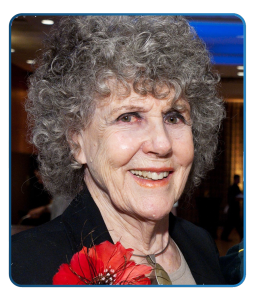 Have you ever felt what it’s like to be in the company of someone very special? My first treat of the day was to be in the presence of Eustacia Cutler, a woman who has led a very busy and full life as a wife, mother, singer, composer, performer and author of, A Thorn in My Pocket. Her book is the story about raising her daughter, Dr. Temple Grandin, who was diagnosed with an Autism Spectrum Disorder at the age of two. Eustacia Cutler is indeed a woman who truly inspires, and as a result her amazing daughter does as well.
Have you ever felt what it’s like to be in the company of someone very special? My first treat of the day was to be in the presence of Eustacia Cutler, a woman who has led a very busy and full life as a wife, mother, singer, composer, performer and author of, A Thorn in My Pocket. Her book is the story about raising her daughter, Dr. Temple Grandin, who was diagnosed with an Autism Spectrum Disorder at the age of two. Eustacia Cutler is indeed a woman who truly inspires, and as a result her amazing daughter does as well.
Eustacia began by stating, “There is only us and us, not ‘us’ and ‘them’. We are a global community and no one’s neurology is perfect or the same, we are all in this together and need to learn from and grow together. Throughout her lifespan she has been a catalyst for educating the public and a great advocate for change, not just in her life, but in the lives of others as well. She was never one to settle and always pushed the envelope for more. She has consciously and constantly focused on the positive, uncovering abilities in order to change possibilities for the better.
Despite the disappointment of Sean Baron’s unexpected absence from the conference, it was replaced by the amazing generosity of Eustacia’s offer to fill in for him. She continued to share her experiences, her knowledge and insight to a hungry audience of parents and professionals. She disclosed many, many personal stories in a very authentic and honest way. Her narratives were touching and connected her immediately to the audience, especially the mothers in the room. Her examples of what life was like as a parent of a child on the autism spectrum and the lessons learned along the way were powerful.
She spoke of the importance of identity, for parent and child, and the impact it has on the connection between them. She stressed the value of self-care in helping one be the best parent possible and how important the support of friends, family, professionals and community are.
One of the many stories Eustacia shared was of her grandson in the high chair pointing to the cookie jar and saying “oreo”, which she used as an example of conceptual thinking and the importance of context to make communication relevant. She also touched upon the significance of executive function to help ‘put it all together’ in order to behave as expected, which is a challenging expectation for many children with autism. Children on the spectrum can learn these skills; it just takes more time and patience.
She shared the work of Dr. Simon Baron-Cohen and the differences in the wiring of the brain that makes it easier for some people with autism to systemize rather then empathize, as well as the role “mirror neurons” play in an ASD child’s ability to empathize.
Her talent for performance was obvious as she did impersonations of the characters in her narratives and her accents were not only enjoyable, but impeccable. It was also our privilege to hear her recite from her personal essays. As she read her poem, Limbo, much of the audience identified with her descriptive words “a place of social isolation – a condition of neighborly neglect or oblivion.” She describes this limbo as a place that is constructed out of mutual need. Unfortunately this limbo is a stagnant place where little growth occurs – therefore Eustacia made an early decision to glorify her child instead of remaining in limbo so that real growth could occur for both of them.
 The second treat of the day was a most valuable presentation from Dr Jed Baker. A confident and skilled presenter, Dr Baker began with one very powerful word that can make a big difference for anyone, especially a parent of a child with an Autism Spectrum Disorder – and that word is HOPE. Having the best attitude and a positive outlook can make all the difference – without it, fear and anxiety can easily take over. Having hope and presuming competence is the first and best thing we can do to help caretakers.
The second treat of the day was a most valuable presentation from Dr Jed Baker. A confident and skilled presenter, Dr Baker began with one very powerful word that can make a big difference for anyone, especially a parent of a child with an Autism Spectrum Disorder – and that word is HOPE. Having the best attitude and a positive outlook can make all the difference – without it, fear and anxiety can easily take over. Having hope and presuming competence is the first and best thing we can do to help caretakers.
Dr Baker’s clinical expertise is apparent and his willingness to help shines! He related many humorous stories as real life examples to present his teaching points. His personal narrative of shopping in the grocery store with his children highlighted the importance of controlling one’s self in the face of difficulty. “Ninety percent of teaching and parenting is tolerance”, he said. The ability to tolerate our own discomfort long enough to think about what we need to do is crucial for resolving any distressing situation.
Staying calm and not allowing our prefrontal brain to get hijacked by our limbic system will always help us think of something to do, but Dr. Baker posed the question, “What if it doesn’t work”? The decision to punish will almost always escalate the situation and a power struggle will typically fail. A better course to take, he stated, is to learn to prevent the behavior by asking why it happens – “what is the trigger”? He emphasized playing detective and discovering clues to help customize the way a new skill needs to be taught for each unique individual.
This was just the beginning and a very small portion of the solid gold nuggets of information that Dr Baker distributed. As the afternoon progressed he went into great depth about handling crises and utilizing various strategies to effectively manage behavioral and social challenges.
If you missed this wonderful opportunity and are searching for interventions that will empower you as a parent, or teacher, of a child with an Autism Spectrum Disorder, I urge you to watch for his next event and sign up immediately – his valuable information is worth every penny! Or, you can purchase one of his many publications:
- Social Skills Training for Children and Adolescents with Aspergers Syndrome and Social Communication Problems
- Preparing for Life: The Complete Handbook for the Transition to Adulthood for Those with Autism and Aspergers Syndrome
- The Social Skills Picture Book; The Social Skills Picture Book for High School and Beyond
And his latest releases:
- No More Victims: Protecting those with Autism from Cyber Bullying, Internet Predators, and Scams
- No More Meltdowns: Positive Strategies for Managing and Preventing Out-of-Control Behavior
A companion website and mobile app for, No More Meltdowns, is now available along with his latest release, Overcoming Anxiety in Children and Teens.
The messages these two amazing individuals shared came from different perspectives, yet they were similar in many respects. Both Eustacia Cutler and Dr. Jed Baker emphasized the importance of self-care for parents and caretakers, and agreed that happy people are better parents and teachers.
If you missed this amazing event, don’t despair – simply visit the Future Horizon site http://fhautism.com/about-our-conferences.html to find out where Eustacia Cutler and Dr. Jed Baker will be next, or find another inspiring event to attend. If you are reading this review, simply add the code – PARENTCOACH (all one word, upper case) – at checkout to receive a 10 percent conference discount, or 15 percent off the insightful books written by these two remarkable individuals, and others as well.
Want your child to be more organized for school success?
By · Comments Is your child as organized as you would like him to be?
Is your child as organized as you would like him to be?
Is she slow at acquiring organizational skills, especially when it comes to school work?
Having a child with a developmental delay can make things move much slower. But slow is OK – it’s a good enough way to start and there is always room for progress. Remember Aesop’s Fable, The Tortoise and the Hare? Slow and steady wins the race!
It’s so important that you always presume competence in your child despite her challenges! Your child can become more organized. He can learn new skills, and his brain can always develop new neural pathways for them, as long as the teaching is customized to his needs. Learning how to be more organized will make life easier for your child, and for you.
The ability to be organized depends on your child’s executive functioning skills. Executive functioning is a set of skills that help you get things accomplished. This command center is located in the frontal part of the brain and controls how your child plans, remembers, manages time and is able to organize him self. These skills are extremely important to help your child with daily chores and responsibilities, as well as succeed in a job later in life.
The traits of an organized person are:
- Establishing goals and priorities.
- Planning ahead.
- Budgeting time effectively.
- Meeting deadlines.
- Recording assignments systematically.
- Acquiring the materials necessary for work.
- Keeping the workspace neat and organized.
No child, on or off the autism spectrum, is skilled in all of these organizational traits, and many adults are deficient in some of these areas as well. It’s crucial that systems addressing executive functioning be put into place at home and at school for children on the autism spectrum if you want them to be better organized. Your goal as a parent is to launch your child into adulthood being as independent as is possible. Focusing on improving these skills at home and advocating that they also be addressed in school will make your child’s transition into adulthood easier.
Here are a few things you can do at home to help your child become more organized and time efficient:
– Teach organization. Create a system for organizing assignments, keeping track of notes and papers, and maintaining a productive homework environment for your child. Invest time in teaching your child about the why and the how—it will pay off big dividends in the long run.
– Customize it to your child. Be forever mindful of choosing a system that speaks to the way your child takes in and assimilates new information best. Is her learning style visual, auditory or hands on? What is his best manner of communication? What other unique things do you need to pay attention to that helps your child learn best?
– Motivate your child. In order for your child to improve in this area, he first needs to be convinced that organization will make his life easier. Instead of lecturing, give examples of tasks done with good organization and the results they produce. It’s also very beneficial to use yourself as a role model – real life instances that demonstrate the outcomes your child wants.
– Practice with a purpose. If your child is reluctant, encourage her to enter into a pilot project or experiment. Present a plan that is very clear and time limited so she can see a beginning and an end. Entice her with a small reward at the end if necessary. Then actively involve her in organizing her notebooks, her desk with all the essential materials, and how to budget her time. After she has made use of this new system for a while, evaluate the changes you have both seen or experienced. Seeing the benefits first-hand will quickly convince any child.
– Consider style and perspective. Always keep the way your child’s brain and body works best in mind. The way you organize may not be agreeable to his learning style, temperament, or sensory system. A customized approach is always the wisest one to take. Looking at his world through his lens and getting his input will help keep you on the right track.
– Teach your child to ask for help. This is a simple skill that is often assumed everyone has but not every child does. Does your child really know how to do this? If not, teach your child when she needs to do this and how? Walk her through it if necessary and practice as much as you can.
– Be patient. I know you have heard this one before but it bears repeating. This will be a slow process, so start small and measure things in tiny increments so success is more apparent.
– Bite your tongue. Remember – no nagging or lecturing! Show – don’t tell.
Need help teaching your child to be organized? As a coach, I can help you fill in the gap between essential clinical support and practical at home solutions. Discover tangible tools to help you learn your child’s language and understand how she experiences the world in order to create a system of organization that works for him.
Reduce Your Child’s Social Anxiety at School
By · CommentsHow much insight do you have about your child’s school experience?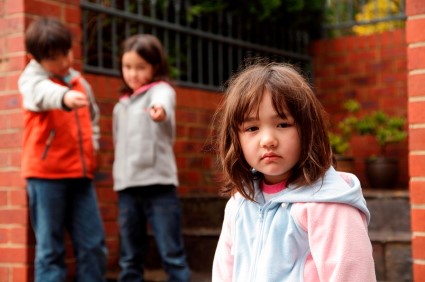
Does your daughter worry about ‘fitting in’?
Is your son telling you he has friends at school when he really doesn’t?
Would you like to reduce your child’s anxiety about the school social scene?
As adults we are often able to control how much and when we want to socialize but a child does not have that luxury. Young children are often placed in environments that require them to socialize, like attending school, whether they want to or not. For children with an Autism Spectrum Disorder, a school environment just might be their worst nightmare and largest source of anxiety.
When you have a child that struggles with developing social relationships or understanding social cues, school can be a cold, lonely and anxious place.
“Will I make a friend this year?”
“Will everyone ignore me or make fun of me?”
“Will I be bullied?”
These are questions that loom in the mind of many kids as a new school year begins and makes things very difficult for them, and their parents. Some young children wade through this social jungle with very little awareness, yet others have heightened anxiety as they consciously struggle to “fit in”.
Making and keeping friends is an important component to creating a positive school experience for your child. Watching your child struggle to have friends can be heart wrenching, and difficult to accept, but feeling helpless as a parent does not have to be the norm. There are many things you can do to help your child maneuver through this social web.
Here are a few ideas to reduce your child’s social anxiety and help him enter the social scene at school:
– Encourage social interactions (but don’t pressure). Helping your child make and keep friends will create a more positive school experience for her. Providing ample opportunities for your child to engage socially is important, but never force it. Find opportunities to invite old or new classmates over, so your child can get to know them better and practice his social graces. Go over manners, conversation starters, and scripts with your child before they arrive. Always keep your child’s interests and curiosities in mind, and keep on the lookout for groups that share the same.
– Be accurate. When young children begin making connections with other individuals, the adults in their lives apply labels to those relationships. You might say to little Susie after she has engaged in some parallel play in the sandbox with another child in the neighborhood, “You have a new friend.” But does Susie really understand what that means? And is it really accurate?
– Define friendship. Determine your child’s concept of a friend. Talk to your child about what makes someone your friend. What does a friend look like, act like, sound like, and make you feel like? Make the word friend a daily part of your vocabulary. Discuss your friends, past and present, and why you became friends.
– Be a guide for choosing and making friends. Discuss the importance of having similar interests and being curious about what the other person does. Ask your child to consider what they want to give and receive from a friendship. He may have no idea at first, but brainstorming traits will help create a visual map from which to work. Talk about and role-play ways to be kind, courteous, and appropriately inquisitive about the other person.
– Teach how to keep a friend. Teaching respect, empathy, turn taking and perspective is sometimes a challenge for children with autism to comprehend yet possible, and vital to the process. The article, 4 Tips to Expand Your Child’s Ability to Empathize, can help you discover some simple ways to build empathy in your child.
– Provide conversation starters. Explore what to say when you meet someone and want to develop a relationship with them. For tips and pointers you may want to check out this post from a colleague of mine, Stephen Borgman, How to Teach Children With Aspergers to Start a Conversation.
– Never force your child to interact. It’s always good to expose your child to various social scenes that offer optional opportunities to interact but if your child really does not want to engage, don’t push. Do your homework before you bring your child to a social setting. Prepare her for the experience and coach her with the social skills you have been practicing together. When you get there, gently encourage but if you are sensing anxiety and resistance, simply observe. Use the situation in front of you as a teaching opportunity and talk to your child about what is occurring – how children are engaging, who is being kind, how they are taking turns, etc.
– Ask “what if?”. Use your home environment as a natural laboratory for learning social skills. While watching television or movies with your child, stop the action and inquire what she might do in a similar situation, especially when there is a questionable or challenging social interaction portrayed. This will trigger his social brain to engage, and reinforce or develop new neural pathways. Maintain curiosity and pose questions whenever the opportunity arises.
As these skills are being taught it is important to practice, practice, practice. Giving children ample opportunities to apply friendship-making skills is extremely important and cannot be overdone. The more confidence your child acquires, the less anxiety she will have.
If despite your efforts your child does not excel in the social scene at school, all is not lost. If you have been persistent in teaching and modeling the basic social skills necessary for creating relationships throughout his or her school experience your child will have a much better chance of social success in adulthood, when one can choose the social situations they are most comfortable with.
Mastering the social environment is a lifelong process, and none of us, even as adults, ever perfect the skill of developing and maintaining friendships completely. So be persistent, think positive, and have patience with your child and yourself.
Temple Talks about Autism and Sensory Issues: The World’s Leading Expert on Autism Shares Her Advice and Experiences by Dr. Temple Grandin – Book review
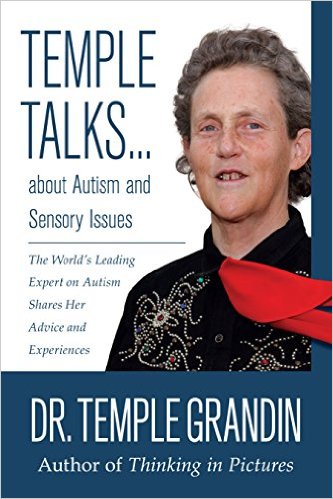 As a professional who works with parents of children on the autism spectrum I know you do not have a lot of quiet time to sit down and read a book from cover to cover. Despite living a life that tends to be overwhelming, I know you are eager for brief and reliable information to help you meet the needs of your child in the best way possible. If quick, easy and reputable information is really what you are after, then this book meets all the criteria.
As a professional who works with parents of children on the autism spectrum I know you do not have a lot of quiet time to sit down and read a book from cover to cover. Despite living a life that tends to be overwhelming, I know you are eager for brief and reliable information to help you meet the needs of your child in the best way possible. If quick, easy and reputable information is really what you are after, then this book meets all the criteria.
This is Dr. Grandin’s newest book which joins the ranks of about fifteen others and is published by Sensory World. It is so easy to skim this book and find exactly what is relevant to your current parenting situation. There it is, right at your fingertips. Contained within these 120 pages you will find very useful and practical information about autism and sensory issues that Dr Grandin presents in a very clear and matter-of-fact style.
You may not find anything new in this book if you have already read some of Temple Grandin’s previous books but it is laid out in a way that is very reader friendly. If you have never read any of her previous works you’ll be starting off on the right foot by beginning with Temple Talks… about Autism and Sensory Issues.
As for reputable, there is no one more highly regarded in the field of autism as Dr. Grandin. She fills the pages of this book with great advice derived from her wealth of personal and professional experience. The last part of Temple Talks … answers questions that many other parents can connect with. These questions were gathered from the “Ask Temple” section of her website, where anyone can pose a question, and her conferences, where she always makes herself very available to the parents that attend.
This new book is such a fast and straightforward read that it makes sense to have it available in the waiting rooms of pediatricians, psychologists and any other autism related providers. Parents can educate themselves while they wait and discover strategies they can implement when they get home.
This book is also a must to have on hand in the teacher’s room of every school. It’s a great way to inform many teachers, aides and staff about autism. Skimming through it during lunch will help them acquire a better understanding of how to deal with the sensory issues and challenges their students with autism have.
To get your copies of this handy guide from Dr. Temple Grandin at a discount simply click here to get to the Sensory World website. Then use my code PARENTCOACH in the coupon code box when checking out to receive your 15% discount and enjoy!
‘Becoming’ the Change your ASD Child Needs to Blossom
By · Comments Doesn’t the unexpected journey you are on into this world of autism continue to transform your life? You are not the same person you used to be and you have yet to become the person or parent you are meant to be. Did you ever hear the saying, “You are a human becoming”, as opposed to a human being?
Doesn’t the unexpected journey you are on into this world of autism continue to transform your life? You are not the same person you used to be and you have yet to become the person or parent you are meant to be. Did you ever hear the saying, “You are a human becoming”, as opposed to a human being?
“Not a perfect soul, I am perfecting. Not a human being, I am a human becoming.” ― Normandi Ellis, Awakening Osiris
None of us are done yet.
I love that concept of ‘not being done’. You are always evolving on some level. The daily choice you have to make is how quickly you want to progress and how close you want to get to ‘being done’ – for you and your child. This is a lifelong voyage – with change and growth occurring at the pace you allow along the way.
That’s right, you can take charge of, regulate and direct the progress you and your child make by being open to the adventure of ‘becoming’.
Where are you on this path? The answer to that question will depend on various factors.
The first, and most important factor is attitude. Ask yourself this question, “What is my attitude?”
What exactly is attitude?
The definition of attitude according to the Merriam-Webster Dictionary is:
at·ti·tude noun \ˈa-tə-ˌtüd, -ˌtyüd\
: the way you think and feel about someone or something
: a feeling or way of thinking that affects a person’s behavior
Many parents flounder immediately after they receive their child’s diagnosis of an Autism Spectrum Disorder (ASD). That is to be expected.
The disappointment, the anger and the upheaval that accompanies a diagnosis of an Autism Spectrum Disorder for your child can be extremely unpleasant and frightening. The rush of emotions can be so debilitating that you find yourself unable to take any action. It takes a while to filter through the shock, the denial, the anger and the grief about the loss of the family life you thought you would have.
The goal here is to make peace with all those emotions and get to acceptance as quickly as possible but the path there can be tricky and filled with many obstacles. The shock of the diagnosis can linger and leave you in a fog for months. But the sooner it clears, with or without anyone’s assistance, the sooner you arrive at that place of true acceptance which enables you to move forward and ‘become’.
As a result, your attitude will automatically begin to take shape and evolve into exactly what your child needs to help him grow and blossom.
So, where are you on this path?
If you feel you spend the majority of your time in the land of true acceptance, and your attitude is where it needs to be for growth to occur, then feel free to stop reading.
If you’re not sure where you are or you’re still struggling to get beyond your child’s diagnosis of autism and are confused about what to do next, then I encourage you to continue reading and consider the following strategies before you proceed.
- Take some time for reflection. It’s important to set aside adequate time to honestly reflect upon your situation. Find five quiet minutes before you close your eyes at night to assess where you are. Once you have a true and clear picture, you’ll be in a better position to objectively evaluate the resources that are available to you. Being open to all possibilities and reflecting upon them carefully will allow you to think proactively and better prepare yourself to jump into action when necessary. This places you in the best position to connect with what will work best for your unique child.
- Honor your emotions, without judgment. Look at and listen to your worries and fears. Once you have acknowledged them for what they are, find a way to sit with them, instead of against them, so you can be more present. Feelings are neither right, nor wrong, they just are. Expect all feelings to knock on your doorstep. And when they do, greet them at the door as any good host would. Expect to see both the positive and the negative but don’t invite the negative ones in. Politely tell them you don’t have time for a visit and ask them to leave, then close the door.
- Get past the hurt, disappointment, anger, etc. Once you have acknowledged these feelings find a constructive way to let them go. It is important to minimize or remove them from your path so they don’t become obstacles. Too much negative energy spent on them will only drain you and make you less available to your child. Dealing with these emotions is not only OK – it’s mandatory. This will do more for your child than any treatment out there.
- Find and join a support group. Don’t let any embarrassment or shame you might be feeling prevent you from reaching out to others. There are many other parents who have been in your shoes and the support you can get from those who have stood there before you is extremely comforting and will help motivate you to keep putting one foot in front of the other.
- Keep in mind that this is a process you have to keep working at. There will be times when you may feel as if you have resolved all of your negative feelings but there will be days when they return. Expect them, but have a plan to deal with them as they appear so you can keep putting one foot in front of the other. Talk to someone in your support system, take a walk, listen to music or whatever will help you process the emotion.
- Search for experts. If you can’t seem to move forward by yourself, you may be experiencing an emotional block. The best way to shorten its course is to find someone experienced who can support and guide you through this phase, someone who will listen and help you process your feelings in a non-judgmental way. A good therapist or a qualified parent coach is always a good bet to help you conquer any emotional hurdle.
Always remember, if your emotions are keeping you stuck, your mindset and attitude will not be where they need to be and you, and your child will continue to struggle.
All too often, I meet parents who have been floating in limbo for years, confused, frightened and concerned about what the future holds for their child if things don’t change.
But guess what needs to change?
That’s right, you!
You can choose not to change, but change will come – autism makes it happen. So why fight it? Direct your own movie instead of playing the role of an extra.
It’s not easy and it doesn’t happen quickly. In the beginning, you want someone to fix your child and make things easier for her. Eventually you need to realize the power lies within you, and your spouse, to create something different.
Go ahead – I challenge you to take the first step. You can do this by yourself or you can catalyze change faster with the guidance of someone else – such as a qualified parent coach. I promise you, when you transform your way of being, your expectations and your responses, you and your child will blossom.
This is not the 100-yard dash – this is a marathon. So invest some of your time and energy in yourself to support a change that is customized to your child’s unique needs and it will go further than any other therapy you purchase for your child.

Take part in current research!
By · CommentsDo you want to make a difference in the world by contributing valuable information to help the autism community? Would you like to say that you were part of a project to improve the understanding of Autism Spectrum Disorders? Then why not be a part of a new Autism Research Study? And guess what? – You don’t have to be a parent of a child diagnosed with autism.
Maastricht University is seeking participants to complete their online questionnaire concerning the heritability of Autism Spectrum Disorder (ASD) traits, specifically sensory processing issues. The study is seeking to better understand the heritability of these traits and how they relate to other psychological factors.
If you are a biological parent of a child between 4-17 years old – with or without ASD – you can help advance autism research. And guess what? Upon completion, participants are entered in a lottery for two $50 gift cards. To learn more about the study, please visit their research website: www.Autism-Research-Maastricht.com. Here is their flyer below:
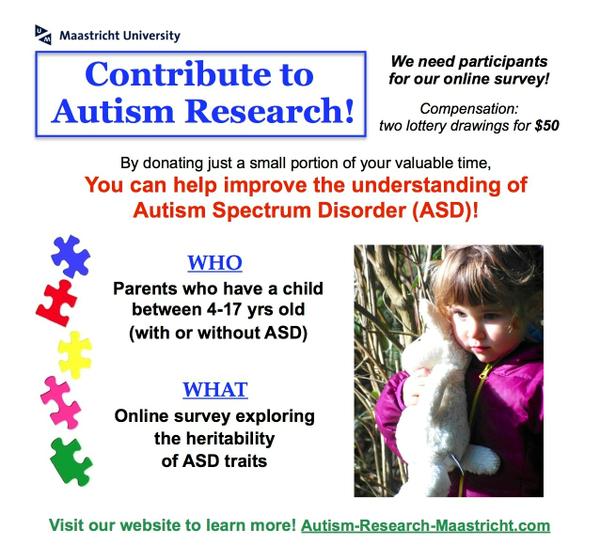
 Enter your Name and Email below to receive a free copy of "Parenting a Child with Autism - 3 Secrets to Thrive" an e-course that will guide your parenting to maximize your child's greatest potential.
Enter your Name and Email below to receive a free copy of "Parenting a Child with Autism - 3 Secrets to Thrive" an e-course that will guide your parenting to maximize your child's greatest potential. 










